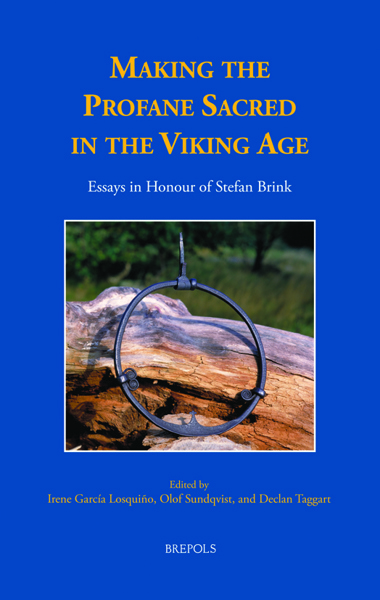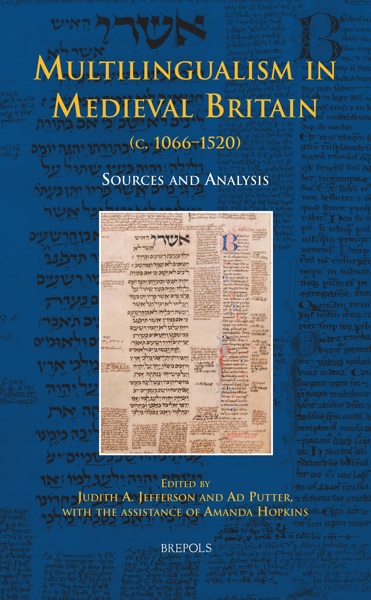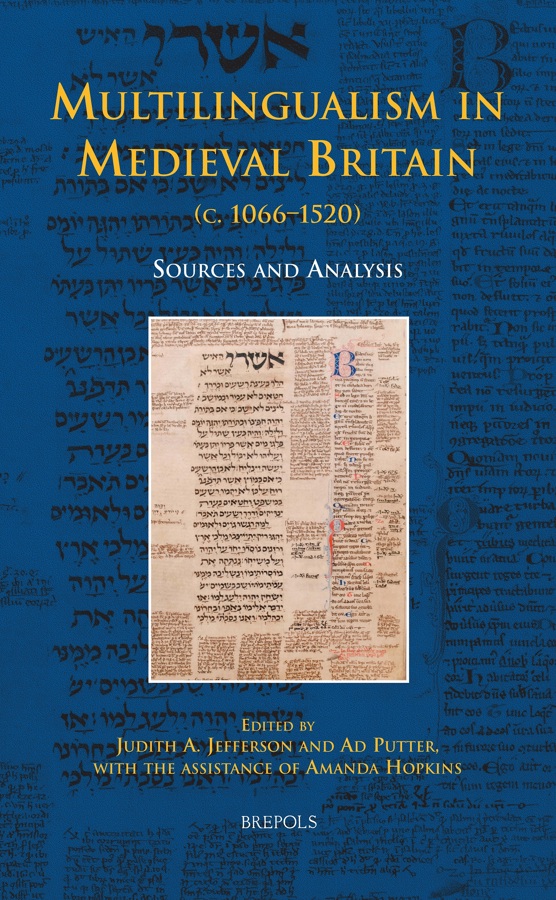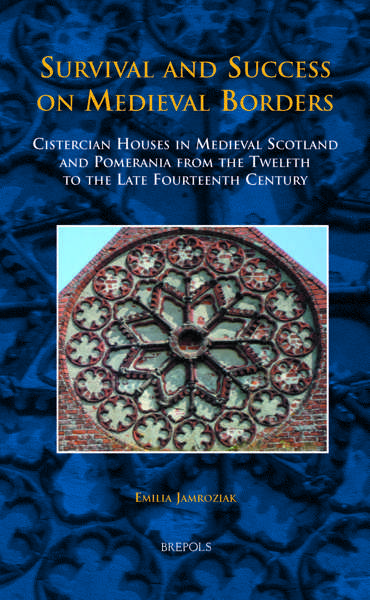
Multilingualism in Medieval Britain (c. 1066-1520)
Sources and Analysis
Judith Jefferson, Ad Putter (eds)
- Pages: xxiv + 292 p.
- Size:156 x 234 mm
- Illustrations:2 b/w, 4 tables b/w.
- Language(s):English, French, Latin
- Publication Year:2013
- € 95,00 EXCL. VAT RETAIL PRICE
- ISBN: 978-2-503-54250-8
- Hardback
- Available
- € 95,00 EXCL. VAT RETAIL PRICE
- ISBN: 978-2-503-54263-8
- E-book
- Available
The essays collected in this volume deal with the multilingual cultures of later medieval England and Wales and aim to recover the complexities of spoken and written communication in the later medieval period.
"Medievalists of the various backgrounds and interests (...) will be well-advised to take a close look at this book as it has much to offer that would be easy to miss." (Claude Evans, in: Sehepunkte, 13 (2013), Nr. 10, [15.10.2013])
“Medievisti di diversa formazione troveranno in questa miscellanea (…) interessanti spunti di analisi e di ricerca (…) piacevole scoperta degli apporti sorprendentemente innovativi che la ricerca interdisciplinare può fornire al complesso tema del plurilinguismo nel medioevo.” (Marina Buzzoni, in Studi Medievali, 57, 2016, p. 833)
This book is devoted to the study of multilingual Britain in the later medieval period, from the Norman Conquest to John Skelton. It brings together experts from different disciplines — history, linguistics, and literature - in a joint effort to recover the complexities of spoken and written communication in the Middle Ages. Each author focuses on one specific text or text type, and demonstrates by example what careful analysis can reveal about the nature of medieval multilingualism and about medieval attitudes to the different living languages of later medieval Britain. There are chapters on charters, sermons, religious prose, glossaries, manorial records, biblical translations, chronicles, and the macaronic poetry of William Langland and John Skelton. By addressing the full range of languages spoken and written in later medieval Britain (Latin, French, Old Norse, Welsh, Cornish, English, Dutch, and Hebrew), this collection reveals the linguistic situation of the period in its true diversity and shows the resourcefulness of medieval people when faced with the need to communicate. For medieval writers and readers, the ability to move between languages opened up a wealth of possibilities: possibilities for subtle changes of register, for counterpoint, for linguistic playfulness, and, perhaps most importantly, for texts which extend a particular challenge to the reader to engage with them.
Preface and Acknowledgments
Introduction — JUDITH A. JEFFERSON AND AD PUTTER
Addressing Different Language Groups: Charters from the Eleventh and Twelfth Centuries — RICHARD SHARPE
‘Tor for to telle’: Words Derived from Old Norse in Sir Gawain and the Green Knight — RICHARD DANCE
Multilingualism and the Vocabularium Cornicum — ALDERIK H. BLOM
Externarum linguarum excellens: The Rhetoric and Reality of the Languages of Gruffudd ap Cynan, Ruler of Gwynedd — PAUL RUSSELL
Hebrew, Latin, French, English: Multilingualism in Jewish‑Christian Encounters — EVA DE VISSCHER
Language-Mixing in Medieval Latin Documents: Vernacular Articles and Nouns — RICHARD INGHAM
Mixed-Language Accounts as Sources for Linguistic Analysis — LAURA WRIGHT
Written Versus Spoken Macaronic Discourse in Late Medieval England: The View from a Pulpit — ALAN J. FLETCHER
Code-Switching in Late Medieval Macaronic Sermons — HERBERT SCHENDL
What Voice is that Language/What Language is that Voice? Multilingualism and Identity in a Medieval Letter-Treatise — JOCELYN WOGAN -BROWNE
Scribal Responses to Latin in the Manuscripts of the B‑Version of Piers Plowman — JUDITH A. JEFFERSON
‘Divers of Language’: The ‘Macaronic’ Glossing of Skelton’s Speke Parrot — JANE GRIFFITHS
Narrating the Battle of Hastings: Multilingual Britain and the Monolingualism of William of Malmesbury — HARUKO MOMMA
‘And she answered in hir Language’: Aspects of Multilingualism in the Auchinleck Manuscript — THEA SUMMERFIELD
‘Women of oure tunge cunne bettir reede and vnderstonde this langage’: Women and Vernacular Translation in Later Medieval England — ELIZABETH DEARNLEY
Lewd Language: English and its Others in Late Medieval Versions of Scripture — CATHY HUME




